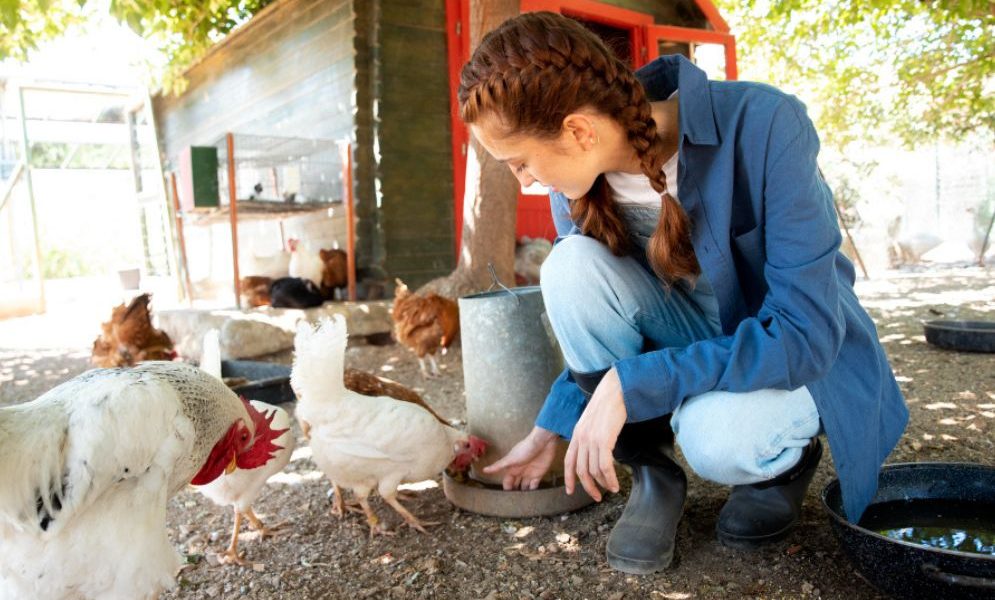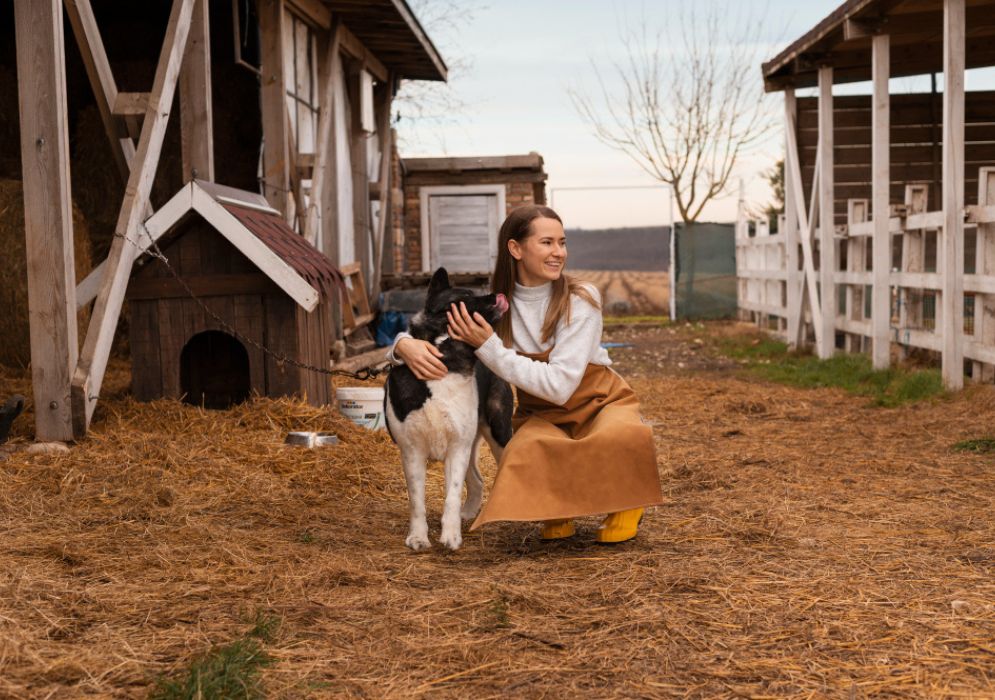Weatherproofing Your Farm: Beyond Shelters And Bedding


Ranches are at the mercy of the weather—storms, heatwaves, floods, droughts, snow, and wind can all cause havoc on production and equipment.
Whether you’re running a small homestead or large commercial ranch, weatherproofing your ranch is necessary in an effort to get it long-term and sustainable.
This guidebook gives you answers to questions that really count and solutions from experts to assist you in protecting your ranch from the extremes of weather.
What Is Weatherproofing A Farm?
Weatherproofing the farm simply refers to making crops, animals, structures, and equipment weatherproof.
It involves physically making structures stronger, drainage, the choice of maximum crops, and a fall-back option for failure.
Why Weatherproofing Is Necessary for Contemporary Farms?
Global warming has amplified the frequency and intensity of severe weather. Droughts are of longer duration, storms are more powerful, and temperature fluctuations acute enough to destroy farms.
The top reasons to weatherproof your farm are:
- Protection against loss of crops and livestock
- Avoidance of repair and replacement expenses
- Enhancing farm efficiency and resilience
- Protection against food loss and regular income
- Compliance with insurance or regulatory demands
Understanding the nature of weather hazards that your farm is exposed to enables you to focus on solutions:
- Heavy rain/flooding: Leads to soil erosion, waterlogging, disease in plants, and damage to infrastructure.
- Drought: Results in water shortage, reduced yield, and stress to animals.
- Extreme Heat: It affects the germination of plants and the health of livestock.
- Cold/snow: Destroys buildings, freezes water supply, and exposes animals to risk.
- Storms/high winds: Uproots trees, burns barns, and destroys fencing.
- Hail: Will destroy crops and break equipment.
How Do You Weatherproof Farm Buildings?

Here are a few ways you can weatherproof your farm buildings.
1. Make Roofing And Siding More Durable
- Putting metal or impact-resistant roofs on buildings to withstand hail and wind.
- Securing barn roofs and walls by bracing or strapping them against hurricanes.
- Sealing holes to prevent water and cold air from entering.
2. Install Proper Insulation
- Insulating the shelter for livestock to keep heat inside.
- Installation of proper windows and doors.
- Preventing water pipes from freezing during winter.
3. Raise Critical Infrastructure
- Shoring up barns, coops, and sheds that are prone to flooding.
- Raised platforms and concrete foundations for machinery.
4. Secure Windows And Doors
- Storm shutters or protection mesh installation.
- Weatherproof seals and locking equipment installation.
5. Protective Wear For Livestock
Animals need protection too, especially young or vulnerable ones. Investing in a calf coat or covers can reduce stress and improve health during extreme weather.
- Use fleece-lined or waterproof coats for goats, calves, and sheep.
- Prioritize breathable fabrics to prevent overheating and skin issues.
Livestock are extremely sensitive to heat stress, cold, and flooding. Here’s how you weatherize them:
- Shade and ventilate in summer months. Utilize misting systems or fans.
- Drainage around the shelters so water won’t collect.
- Bed with straw or rubber mats during the winter months.
- Heat waterers to keep them from freezing.
- Harden fences and gates to make it through storms and animal distress.
What Can You Do to Protect Crops?
Here are a few things you can do to protect your crops.
1. Plant Resistant Crop Cultivars
- Plant flood-resistant or drought-resistant crops depending on your area.
- Crop rotation is necessary for the development of the soil to be sustainable and healthy.
2. Enhance Drainage And Soil Structure
- Utilize raised beds and contour farming to control water run-off.
- Incorporate organic matter to assist in retaining water and preventing erosion.
3. Mulch And Cover Crop
- Mulch stores water during drought and helps with temperature regulation in the soil.
- Cover crops discourage weeds and erosion.
4. Utilize Windbreaks And Shade Nets
- Use tree cover or fencing to reduce wind damage.
- Use shade cloths to protect sensitive crops from direct sunlight.
How Do You Prepare For Flooding?
Flooding is the most damaging weather pattern that hits farms.
Floodproofing methods are:
- Retention ponds and swales are used to direct water.
- Put French drains or pipes for water underground so water can travel through them.
- Build storage rooms upstairs for feed, fertilizer, and chemicals.
- Identify areas affected by floods and relocate assets placed in those areas.
- Plan the movement of livestock using a mobile plan.
How Do You Prepare For A Drought?
Droughts occur more frequently and for a longer period of time. Proactive management of water is crucial.
Important actions:
- Use a drip irrigation system to save water.
- Use a rainwater harvesting system and a water tank to harvest and hold water.
- Plant native grasses and drought-resistant crops.
- Monitor soil moisture content and irrigate when required.
How To Weatherproof Equipment And Machinery?
Farm equipment is costly and generally weather-exposed.
- Store tractors and implements in ventilated, roofed covered barns.
- Paint with rust-proof paint and store in the normal manner.
- Waterproof tarpaulins for shelter in the short term.
- Place equipment above flood levels likely to be attained.
- Install lightning rods on large metallic installations.
Can Renewable Energy Weatherproof A Farm?
Yes, renewable energy technologies such as solar panels and wind turbines can render farms more resistant.
- Utilize solar power to supply irrigation, cooling, and standby power systems.
- Implement battery storage systems as power outage buffers.
- Choose grid-connected systems with auto-disconnection to prevent storm damage.
What Are Emergency Planning Essentials?
Every farm needs to have an emergency preparedness plan, including:
- Weather alert systems (radio, apps, or weather stations)
- “First-aid kit and veterinary supplies”
- “Emergency evacuation plans and emergency contacts”
- “Standby generators and fuel tanks”
- “Water and food supplies for people and livestock”
- “Insurance policies for loss due to weather”
Do Governments Have Programs To Assist?
Yes, governments in the majority of countries have grants, subsidies, or insurance programs to help farmers weatherproof their business.
Examples are:
- USDA NRCS conservation grants (United States)
- European Union CAP funding (Europe)
- India’s PMFBY crop insurance (India)
- Australia’s Farm Household Allowance
Pick up your local agricultural extension office phone and ask what you have available to you.
How Do You Get Started?
Start small by identifying the most obvious weaknesses of your farm. Address them gradually, starting with buildings and systems that yield the highest returns on protection.
It is an investment in your livestock’s future, your property’s future, and your future. With the proper equipment and planning, you’ll be able to do whatever the weather demands you do with assurance.
Weatherproofing your farm is not just about bracing for the next storm—it’s about building resilience into your daily operations.
From infrastructure and animal care to smart tech and land stewardship, every element plays a part. Going beyond shelters and bedding ensures that your farm remains productive, your animals stay healthy, and your stress levels stay low, no matter what the weather brings.









Leave A Comment